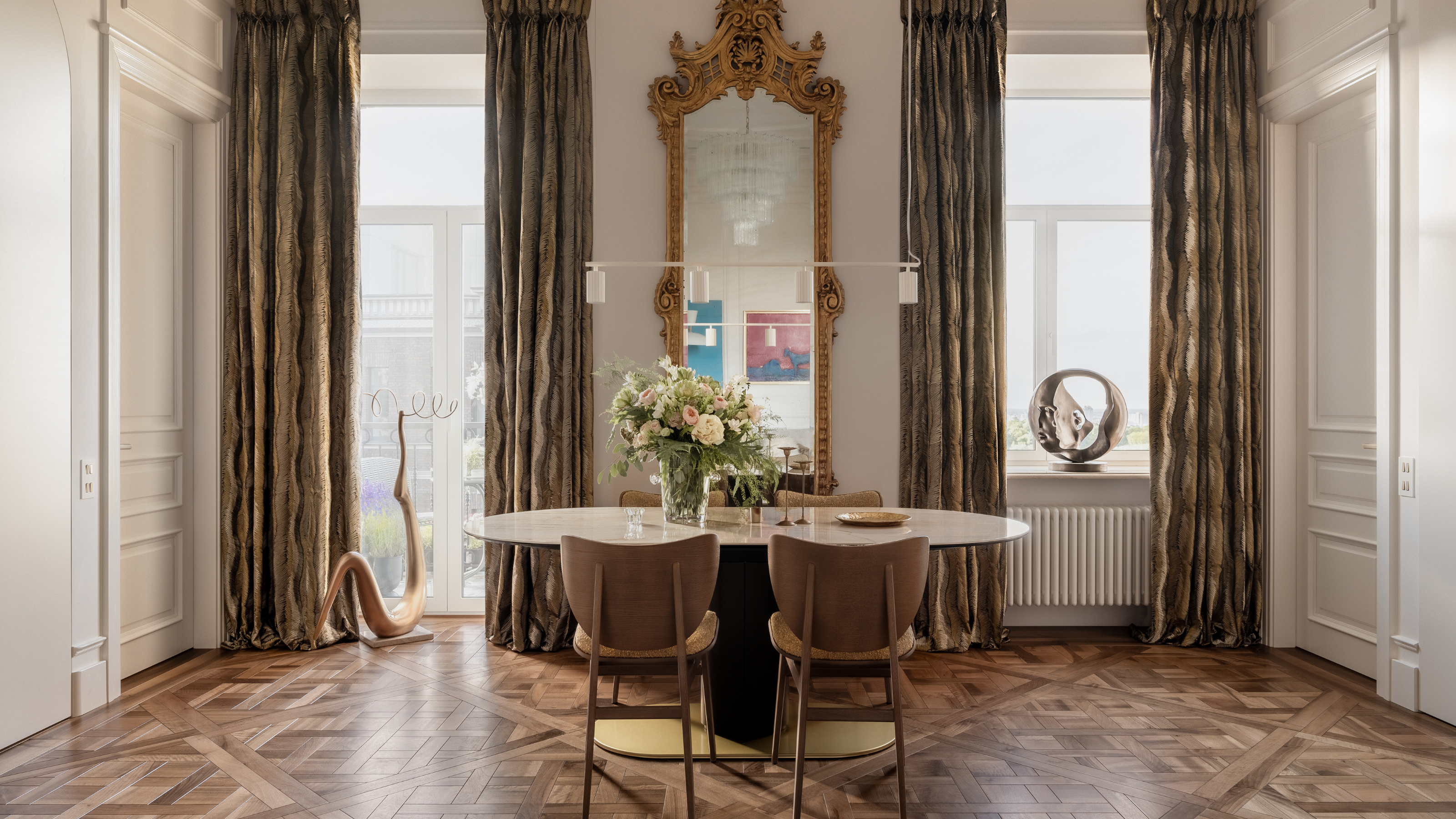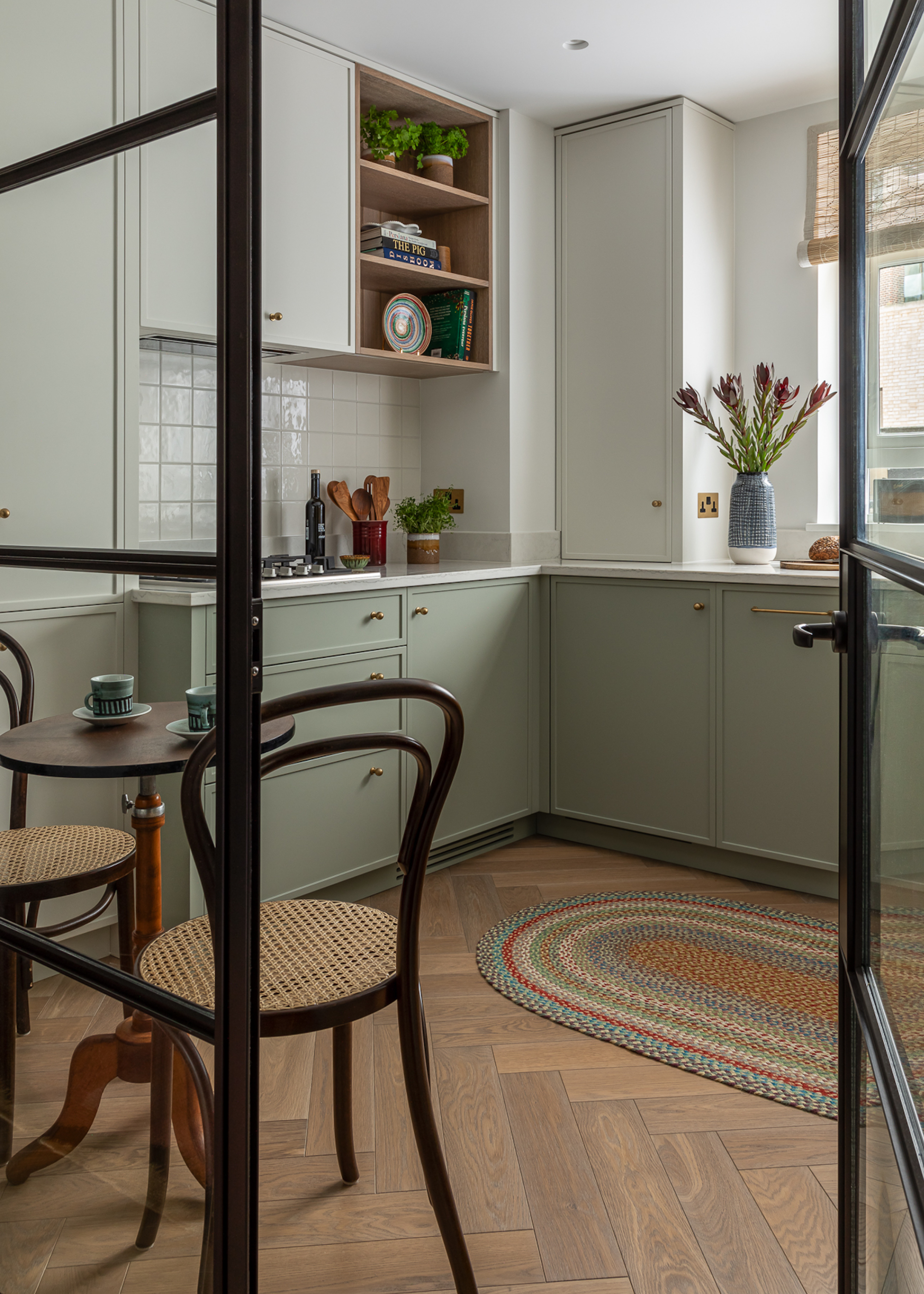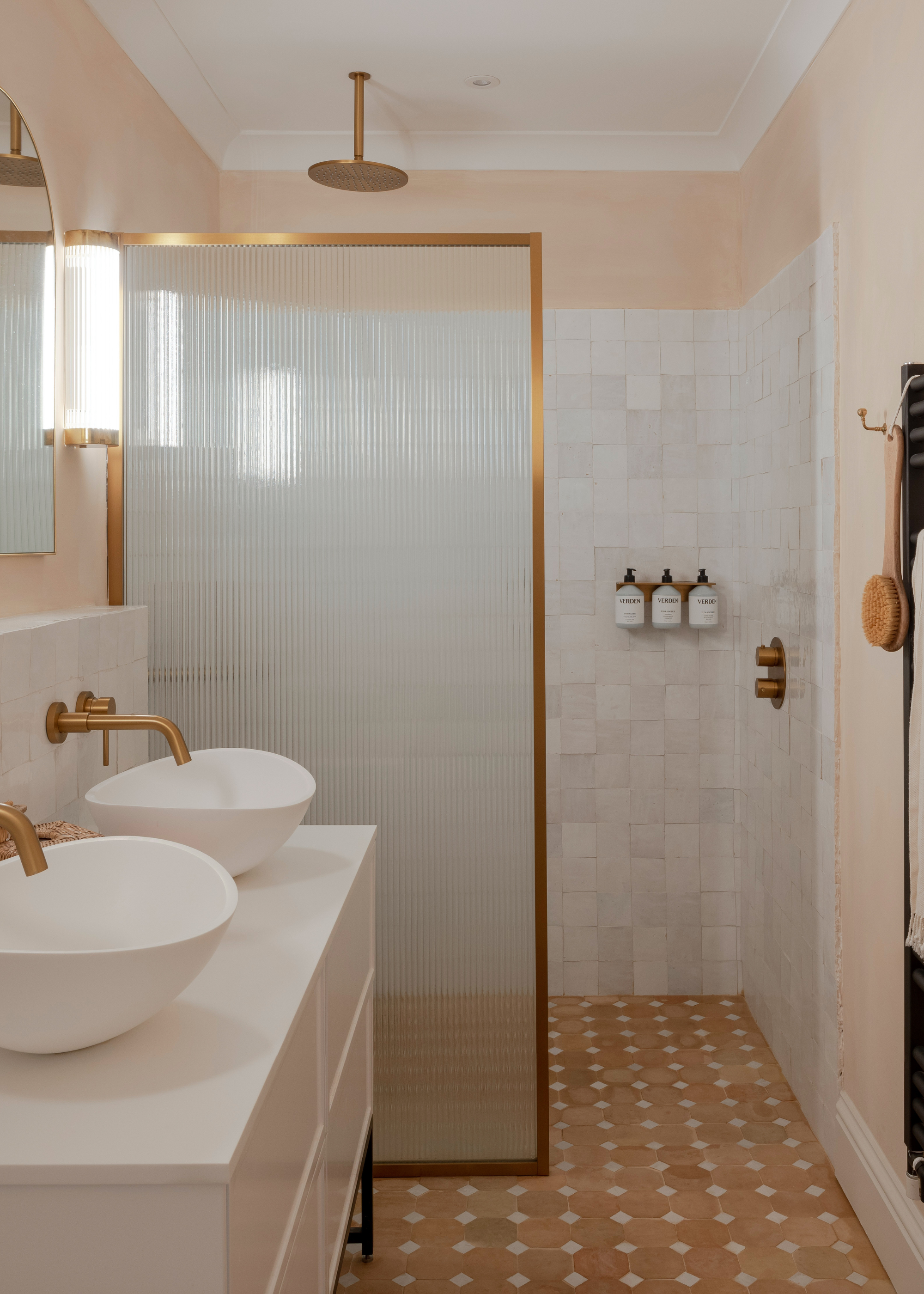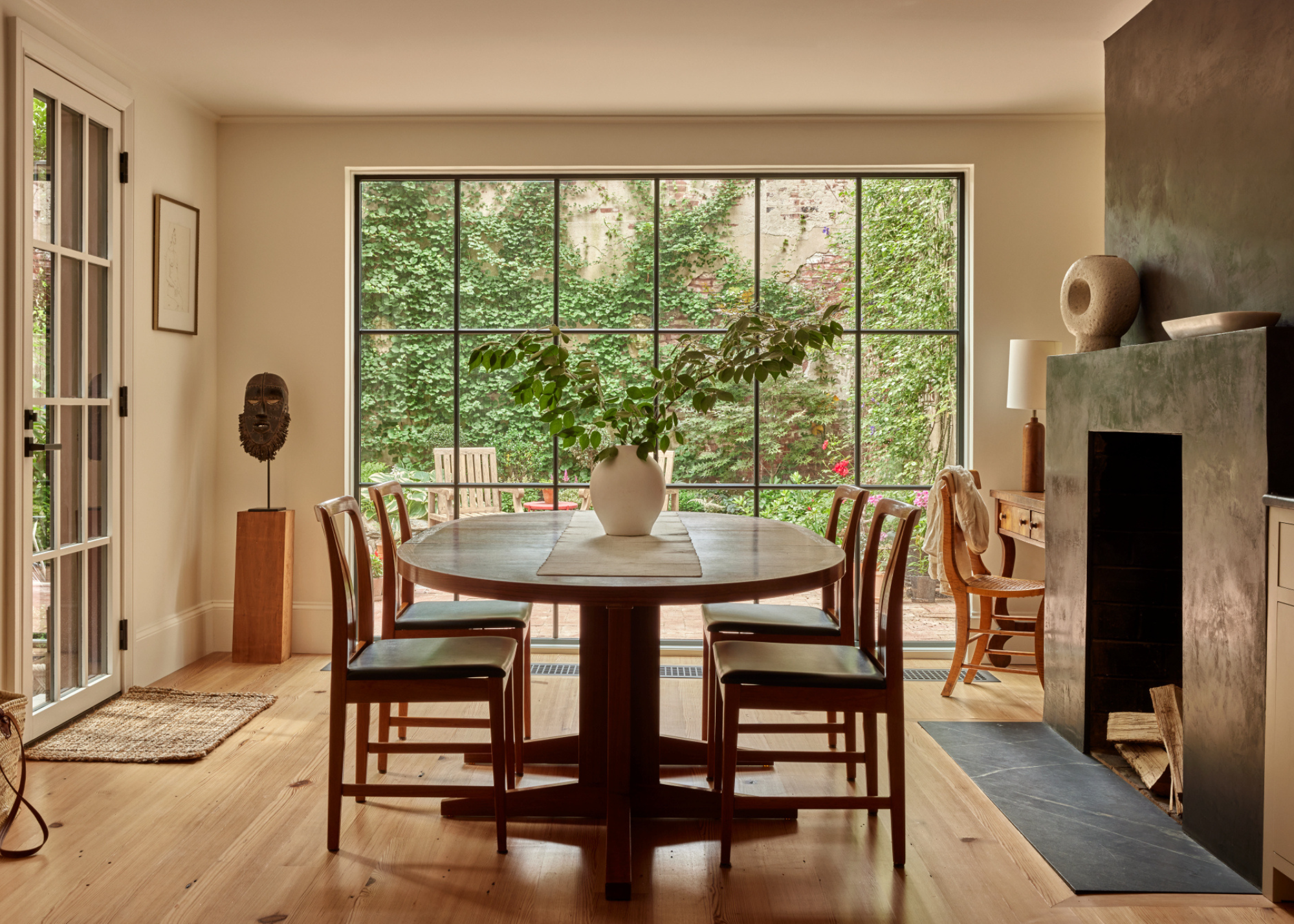
When it comes to the design of your home, we always recommend working from the floor up. After all, this is what will form the basis of your design; it is the foundation upon which you create your home aesthetic. And if you choose the wrong floors... You may as well wave goodbye to your perfect home.
We understand that this may sound dramatic, but the right flooring can completely transform your space, as can the wrong flooring. Of course, no floors are intrinsically 'wrong', but there are some flooring trends that we'd rather leave in the past, where they belong. And the experts agree.
A timeless, chic home starts from the ground up, and picking an outdated flooring style just takes you further and further away from this goal, and it's a hard one to redeem. Unlike accessories and soft furnishings, your flooring is not something you can change on a whim, which is why picking a floor that transcends trends is always the best way to go. But before you can choose that, you've got to know the ones to avoid. So, here are our experts' top picks for the most outdated flooring trends, plus their recommendations for what to do instead.
1. Terrazzo

"In terms of outdated flooring styles, I'd immediately go to Terrazzo, or some type of geometric painted concrete or porcelain tile," shares Alex Dilena, design director from Parts and Labor Design.
Terrazzo is a traditional Italian flooring type characterized by its distinctive mosaic-like appearance, created from shards of marble, glass, and other materials suspended in a cement mixture.
"It's sad because I do inherently love terrazzo...the aggregate can be so beautiful, and is a soft and gentle way to add texture, feels both institutional and occasionally crass (I love crass)," says Alex. "I think it's been so overused in the wrong context for so long that we all just need a break...think pink, pastels, breeze blocks, etc."
Its highly decorative appearance leans into a more maximalist style, and as this becomes replaced with pared-back, minimalist interiors, so too does terrazzo.
"I see a shift towards more of the classics...in both form and material," she explains, "Vinyl and linoleum flooring is definitely making a comeback, a lot of these very classic materials that were once poo poo'd for being almost too utilitarian are definitely showing up more and more. It could be a response to some form of nostalgia we are all feeling or just increasing construction costs..."
2. Marble-Effect Tiles

Sometimes, nothing will beat the real thing. And, unfortunately, this happens to be the case with marble flooring. While it may be appealing to opt for the cheaper, less high-maintenance option, what you save on costs, you'll pay for in appearance.
"Ceramic tiles trying to imitate marble often miss the mark as they lack the depth, natural variation, and tactility of the real thing," explains Camilla Masi, interior designer at Otto Tiles.
Ceramic or porcelain tiles are often chosen for their low costs, as well as their durability and strength, and can be found in a wide variety of styles, with many popular options designed to mimic the look of natural stones. However, part of the beauty of natural stone is its unpredictability, something that can't be captured with a man-made material.
"They always just feel flat and inauthentic, especially when repeated across large areas," comments Camilla, "It’s better to embrace ceramic for what it is, rather than what it’s imitating."
Size: 30 X 30 cm
Material: Nero Marquina, Red Travertine, Rain Forest Green Marble
3. Distressed Wood

"It’s not that I hate rustic. I just want it to feel honest," states Jan Odesanya, from Mondän & Co. "The super-distressed planks trying to channel farmhouse charm often feel a bit... try-hard."
While the farmhouse chic look has its time and place, in the wrong context, it can often appear too contrived, making the whole space feel more like a set design than a home. Plus, this style can often bring practical issues with it.
"Another trend that I visually like, but from a practical point needs a reality check, is raw or untreated wood flooring," explains Dana Borgerson from Dana Liv Interiors.
"Some architects and builders are doing it truly raw, skipping any sanding (we need to be sanding to at least 100 grit) and sealing the floor with something like Bona Traffic HD Raw—a water-based sealer with hardener. It preserves the matte look without augmenting the natural color of the wood and protects it from scratches and stains," Dana continues. "Remember: you're not just living with how the floor looks, but how it feels and performs too."
4. High Gloss Flooring

"High gloss floors (something I truly despise) are often positioned as a luxury choice, but in reality, from a design point of view, I would say they’re anything but," argues Camilla.
These high-shine, high-impact flooring styles rose in popularity due to their low cost. They're typically made out of a laminate or vinyl, which are known for their sterile look, a harsh contrast to the natural, warm look we tend to favor nowadays.
"They feel clinical, show every mark, and offer almost no slip resistance, which is especially problematic in kitchens or bathrooms. There’s an inherent flatness to them that lacks depth and character," Camilla continues.
5. Red-Toned Wood

"We tend to steer clear of flooring with gray or red undertones," says Kevin Kaminski from Kaminski + Pew.
While wood is often described as a timeless material, it's such a broad category that there is, unfortunately, plenty of space to fall into some design traps, including using outdated undertones.
"Red flooring (Brazilian Cherry) rose to overuse in the early 2000s, and grey flooring was a hallmark of the 2010s," Kevin explains.
With so many different wood floor types to choose from, there's no reason to stick to these outdated styles.
6. Large Format Tiles

If there's one thing the experts hate, it's the classic 12" by 14" format tiles. They may sound inoffensive, but once you spot them, you'll quickly start seeing them everywhere.
"My number one trend to ditch is the 12x24 Gray Tile," states Rebecca Merritt from Merritt Design Co. "You know the one — it’s in nearly every builder-grade home, and it feels more like a placeholder than a design decision."
While there may not be anything notably wrong with this tiling trend, there's nothing much right about it either.
"This tile doesn’t bring much personality and tends to clash with other materials as your style evolves," explains Rebecca.
The industrial minimalism of this tile may seem like it would go with everything, but it can end up looking out of place with most interior design styles.
"12”x24” format tile is widely available, easy to install, and affordable, which makes it a go-to option for contractors and developers alike. The ubiquity of this size also makes it rather unremarkable," agrees Kevin.
Size: 298 X 278 X 10 cm/ sheet
Material: Honed Marble
7. Grey Tones

If the 2010s could be summed up in one word, it would be grey. So, understandably, we've come to feel a slight resentment towards the shade, and no longer enjoy seeing it used on every surface and piece of furniture, including your floors.
"Gray-toned floors have had a long run, but it’s time to let them go," argues Rebecca.
Nowadays, we're seeing a general shift towards warmer, earthy tones, which make these cool-toned flooring styles seem especially harsh.
"Whether it’s LVP, laminate, or tile, those cool gray tones tend to make a space feel flat and dated. They rarely complement other finishes in the home and can leave everything looking a bit washed out. If you're going for low-maintenance, there are better options," explains Rebecca.
Although there are ways to make grey tiles look more modern, we'd suggest opting for a more inviting color for your floors.
Now that you're clear on all the trends to avoid, it's time to look out for some new, cool flooring styles to embrace. We're particularly into this striped tiling trend at the moment, which has a modern yet classic look that we can't get enough of.







